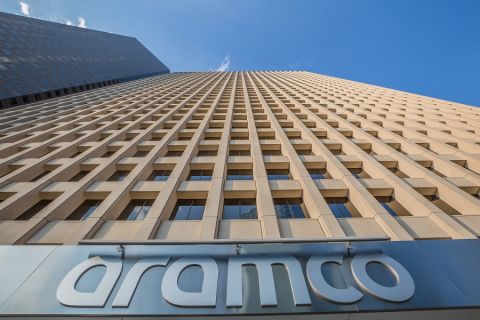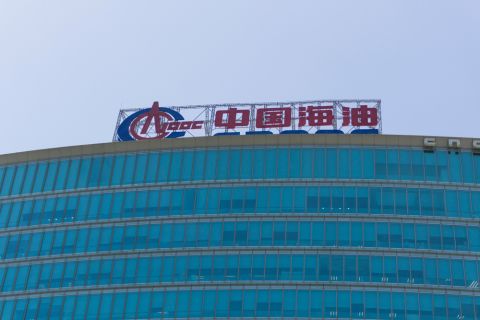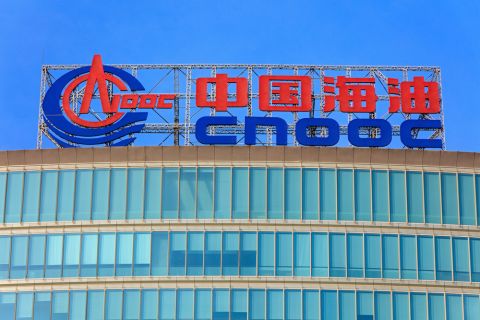Thank you for joining us. I'm Nissa Darbonne, executive editor-at-large. I'm visiting with Sam Holroyd. Sam is chief commercial officer for ZeroSix, which is building a platform for turning P&A [plug and abandonment] liability into cash. Sam, thanks for joining us.
Nissa Darbonne, executive editor-at-large, Hart Energy: So tell us, how do you turn a P&A liability into cash?
Samantha Holroyd, chief commercial officer, ZeroSix: Absolutely. So those operators who have an abandonment liability waiting for them down the road — they have to deal with abandoning the well in 3, 5, 7, 10 years in the future in an uncertain commodity environment with uncertain regulatory over regime in terms of how they should think about their emissions and how they should think about cleaning up their business. We have developed a operation by which you prematurely abandon those producing wells and you say, I'm going to leave oil and gas reserves in the ground. I'm going to abandon those wells today, and I'm going to convert those reserves into carbon credits. Those carbon credits are trading on the voluntary carbon market today. And the real challenge that we are trying to deliver to operators and to clients is that we're looking for a way to make sure that that is either a breakeven or very close to breakeven decisions. So we're trying to make sure that this makes commercial sense in addition to delivering big impact in the environmental world.
RELATED
Women in Energy: Sam Holroyd, Golden Advisory Services
ND: And you're, you're abandoning the reserves too when you've, you've P&A’d it that goes towards the math of, towards the economics because if a, a ton of CO2 is trading for $15 to $25 a ton, you're not just zeroing out the barrels that are being produced and being removed from the environment for not being produced. But you're also receiving carbon offsets for all of those reserves that you've now permanently abandoned. So the math is much more exponential than that barrel that that pumpjack is producing, yes?
SH: Absolutely. So we have clients that want us to help them qualify their assets based on the daily production. And I tell them, I say, look, that's irrelevant. What I really want to talk about is the volume of reserves that you're going to recover from those wells between now and the future, not the daily production. So in some cases, we have projects that are justified by a well that might be producing one barrel a day, but it's also in some cases, barrels that are producing 10 barrels a day in a company's portfolio are the most polluting wells and are the least valuable because the company is spending great resources to maintain that wells production. Not just capital resources, but also personnel and making other emissions impacts on those operations to try to keep those wells producing. And so we try not to use a minimum standard for the daily rate. We try to think about at the project level for the total volume of reserves that you're going to target.
ND: And then lastly, kind of further along, you know, well these are, you know, old verticals, but further along to that… I would think you'd have to get the mineral owners on board, too.
SH: We do. So, part of the permanence requirement for the ZeroSix protocol is first of all it's the operational permanence. So the abandonment of the wellbore itself. It's also abandonment of extraction from that pool of resource or the reservoir we call it. But the third component is a moratorium on the mineral rights to extract from there. And that does seem to be a hot topic for a lot of clients. And we work with a lot of different clients to talk to them about strategies for that. Understanding your mineral owners, understanding their ambitions. In some cases they would, they would be more than delighted to transition their own mineral rights into carbon credits. So I think, you know, don't be afraid of that. I won't say that it's the easiest part of the protocol, but don't be afraid of it because there's lots of strategies, and you'd be surprised sometimes at what we find when we start opening those conversations.
ND: Well because most P&A candidates are old, shallow wells…you’re obviously abandoning that well, but a minerals owner could still have the opportunity to lease the deeper rights. So you can still come back onto that property?
SH: That is a great question. And it's important to clarify that as we define the project, we define that project in a unique reservoir condition. So we look at specifically the vertical and upper and lower boundaries. We look at the lateral boundaries, but things that fall outside those boundaries for this project are still viable for recovery from the mineral owner and the lease. So we're not trying to abandon all future oil and gas recovery. We're focusing on this one project area.
ND: How does one get paid? Do you get carbon offsets in time or is it evaluated that okay, this well was producing this much and a reserves auditor evaluator has determined that, you know, this well is worth, …10,000 carbon offsets. Is the owner like paid up upfront or is it paid in time based on how long it would take to produce those reserves?
SH: No, actually because we are because we move to a permanent abandonment of extraction, that entire volume is what gets converted to carbon credits. So we think of the entire future forecasted recovery. And then that total volume gets assessed and then qualified and then we quantify that and convert it into carbon. And upon the final abandonment of the last well in the project, and getting all the regulatory signoff, then we move to our blockchain and our decentralized verification, which allows us to then fully mint all the tokens. Those tokens then are distributed to your digital wallet. And as a project owner you need to know that at this point it's just another asset in your toolkit, so to speak. You have the opportunity to trade those on the voluntary carbon market. You have the opportunity to hold those if you believe that the carbon markets are increasing in value, which is one of the things we believe in. Or you can begin to retire those carbon credits to meet your own carbon initiatives within your corporation. So there's a variety of ways for you to manage this asset. And that's, that's just a whole new, whole new business for the treasury department of any oil and gas company.
ND: So you receive the credits upfront, but how you choose to monetize them and when you choose to monetize them, it's entirely up to you.
SH: Yes, you receive the credits when you P&A the wells on the project and then they're yours to trade, hold, or retire.
ND: This is very exciting. Thank you. Thank you for joining us, Sam. And thank you for joining us. Stay tuned at hartenergy.com for more and more actionable business intelligence.
Recommended Reading
E&P Highlights: March 11, 2024
2024-03-11 - Here’s a roundup of the latest E&P headlines, including a new bid round offshore Bangladesh and new contract awards.
Sinopec Brings West Sichuan Gas Field Onstream
2024-03-14 - The 100 Bcm sour gas onshore field, West Sichuan Gas Field, is expected to produce 2 Bcm per year.
Proven Volumes at Aramco’s Jafurah Field Jump on New Booking Approach
2024-02-27 - Aramco’s addition of 15 Tcf of gas and 2 Bbbl of condensate brings Jafurah’s proven reserves up to 229 Tcf of gas and 75 Bbbl of condensate.
CNOOC Makes 100 MMton Oilfield Discovery in Bohai Sea
2024-03-18 - CNOOC said the Qinhuangdao 27-3 oilfield has been tested to produce approximately 742 bbl/d of oil from a single well.
CNOOC Finds Light Crude at Kaiping South Field
2024-03-07 - The deepwater Kaiping South Field in the South China Sea holds at least 100 MMtons of oil equivalent.






